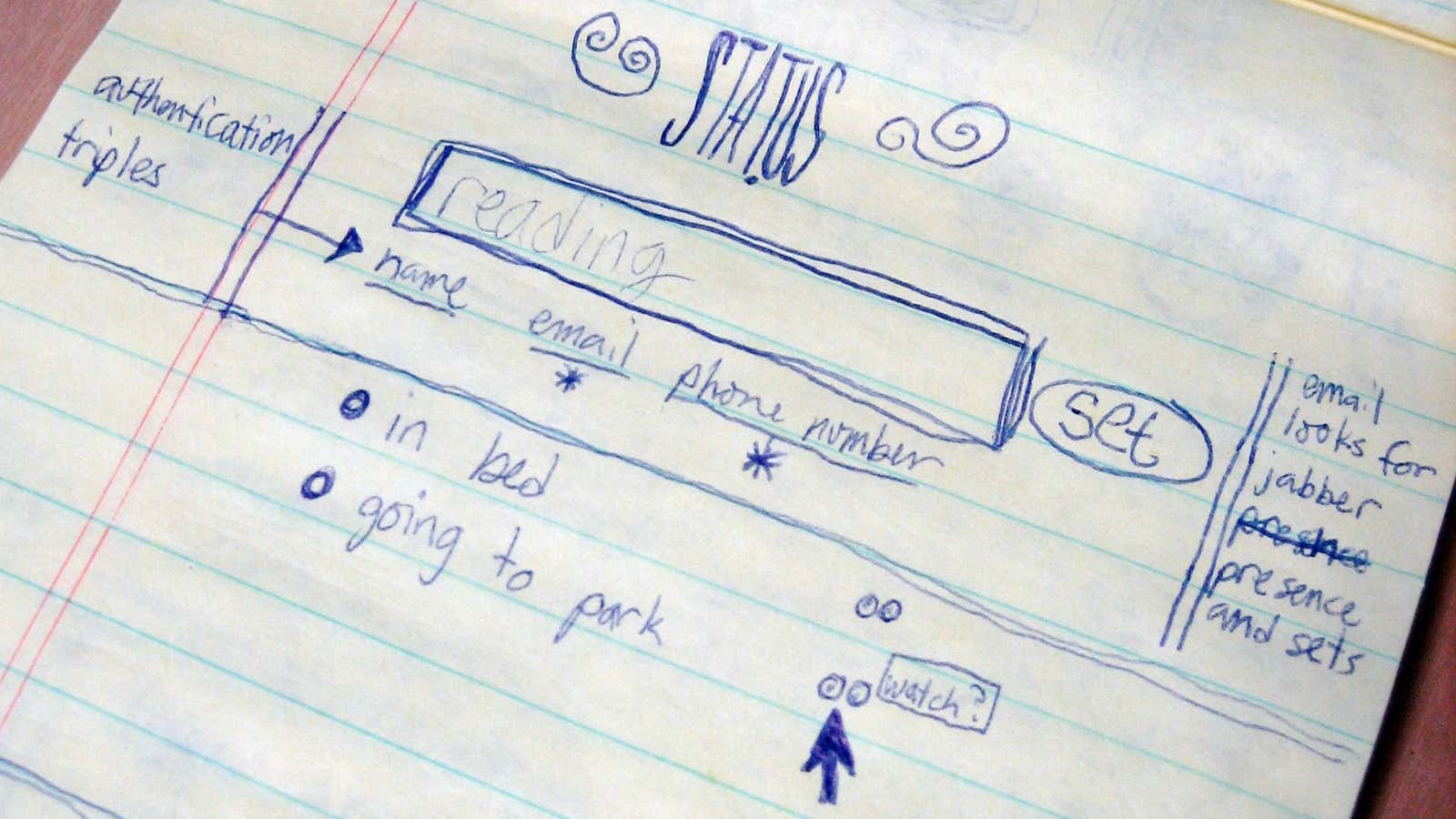Twitter is pretty simple, but it started out even simpler. The 140-character messaging service launched on March 21, 2006 with no way to send a reply or retweet someone. And it certainly didn’t have hashtags.
Those peculiar conventions, which make Twitter both irresistible and confounding today, were invented by its users. After a while, the company picked up on each trend and adopted it as an official part of the service. Now, the @ and # symbols are among the most crucial elements of Twitter’s identity. Here are the stories of how replies, hashtags, and retweets came to be.
The first @-reply
The at symbol has a long history of indicating replies on the internet, from message boards to chat rooms. But it wasn’t until November 2, 2006, that the @ convention came to Twitter. The tweet above is believed to be the first; it was sent by Robert S. Anderson, who is now creative director at Square, the mobile payments startup run by Twitter co-founder Jack Dorsey. Small world.
Anderson’s tweet was hardly the first to include an @, but the previous uses were mostly shorthand for the word “at,” usually in reference to a location. That was actually a very common type of tweet in the early months of Twitter, which was initially envisioned as a way to update friends on your status.
The emergence of @ to mean a reply was a crucial development in Twitter’s history. Early on, its founders struggled over whether the service was primarily for status updates or conversation. (Today, they struggle over which of them first realized it was the latter.) Recent updates to the service have tried to emphasize the conversational aspects of Twitter, linking replies with a thin blue line to make them more readable—and understandable to new users.
The tweet above by Anderson deserves credit as the first @-reply tweet, but nit-pickers will notice he put a space between the @ and the handle of the person he was replying to, Buzz Anderson. The convention that was ultimately adopted by Twitter calls for no space, and the first tweet to do it that way appears to have been sent by developer Neil Crosby on November 23, 2006.
@-replies caught on quickly from there. They became an official Twitter feature on May 30, 2007 with a dedicated page for replies “just in case you missed ‘em.”
The first hashtag
Hashtags were another concept that moved from internet chat rooms and message boards over to Twitter. Chris Messina, best known as an advocate for open-source software, first proposed organizing tweets using the pound sign on August 23, 2007.
The first hashtag on Twitter, which he used as an example of the concept, was #barcamp—a loosely organized series of technology conferences that he helped to create. Messina later elaborated on the idea in a blog post, even drawing up designs of what the feature could look like on Twitter. He called them “channels.” Writer Stowe Boyd proposed the name “hash tags.”
Not many people were impressed. Some thought hashtags were ugly and unnecessary. Twitter executives deemed the idea “too nerdy,” according to Messina. But there were early triumphs, like when people coalesced around the hashtag #sandiegofire to tweet about wildfires that occurred in October 2007.
The concept eventually caught on for everything from events to jokes. Twitter made hashtags an official feature in July 2009. Facebook copied the idea this year.
The first retweet
It wasn’t pretty. But, yes, that’s the first retweet, as far as anyone can tell, on April 17, 2007. Eric Rice was rebroadcasting a reply he’d received from Jesse Malthus. There was no convention for how to do that at the time. Previous uses of “retweet” had been in reference to repeating one’s own tweets.
Rice kept at it, sometimes inserting a hypen into the word, but retweets didn’t take off at first, perhaps because people didn’t see a need for them. The first tweet to use “RT” in the format that’s commonly recognized today appears to have come from @TDavid on January 25, 2008. He was retweeting news about a fire in Las Vegas.
After retweets went mainstream, Twitter called them “a bit cumbersome” and tried to clean them up. A new feature in November 2009 allowed users to retweet someone else without creating a new tweet. It was controversial, and even today, some people prefer the old “RT” method.
